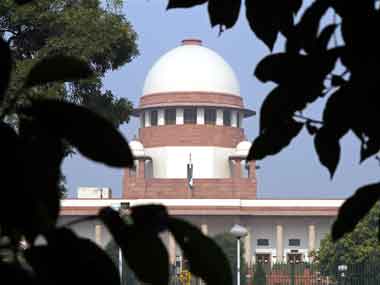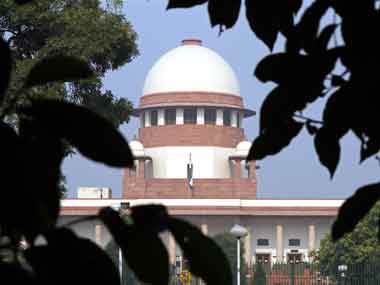A Supreme Court bench headed by Justice Dipak Mishra issued an interim order on 30 November to create the legal framework for the national anthem etiquette, of all places, in cinema halls. This order quickly made its way to national, nay, international headlines. All self-proclaimed patriots and nationalists – in both the Congress and the BJP camp – hailed the court order as a service to the motherland. The left-liberal thinkers, however, denounced the order as a poor reflection on the apex court’s legal and intellectual standing. Pratap Bhanu Mehta, noted columnist for The Indian Express,
wrote
: “This is a judgment that cannot even bear the slightest weight of analysis, and does not bring any credit to the court. It would be easy to dismiss it as an outlier, a poor performance by a couple of judges… The poor quality of these kinds of orders brings out in the open what many citizens feel, but are often too afraid to express: The Supreme Court has been singularly bereft of the kind of imaginative legal and intellectual leadership that establishes court’s authority.” [caption id=“attachment_3136540” align=“alignleft” width=“380”] A Supreme Court bench issued an interim order on 30 November to create the legal framework for the national anthem etiquette. Reuters file image[/caption] The fact, however, is that there have been many occasions when the Supreme Court judges have demonstrated their high legal and intellectual standing by delivering outstanding judgments. Take the case of Bijoe Emmanuel & Others vs State of Kerala and Others. In this case, three children belonging to a sect called Jehova’s Witness refused to sing the national anthem in the morning assembly on the ground, stating that it was against their religious faith. These students were consequently expelled from the school. This decision was challenged in the Supreme Court. Justice O Chinappa Reddy and Justice MM Dutt, two outstanding judges of the apex court, in August 1986 ordered the school to revoke the expulsion of the three students. The judges termed the expulsion as a “violation of the fundamental rights to freedom of conscience and freely to profess, practise and propagate religion.” “There is no provision of law which obliges anyone to sing the national anthem. Our tradition teaches tolerance; our philosophy preaches tolerance; our Constitution practises tolerance; let us not dilute it,” the judges had said. Justice Mishra and Justice Amitava Roy did precisely what Justices Reddy-Dutt had warned against. The 30 November order diluted the very letter and spirit of our Constitution when it came down hard on the claims of individual rights: “It does not allow any different notion or the perception of individual rights that have individually thought of have no space (sic). The idea is constitutionally impermissible,” the judges had noted. The order stated that, “all cinema halls in India shall play the National Anthem before the feature film starts and all present in the hall are obliged to stand up to show respect to the National Anthem…We have so directed as Mukul Rohtagi, learned Attorney General for India, submits with all humility at his command and recommend (sic) that National Anthem has to be respected.” This gives rise to a pertinent question: If there is such a rare convergence of opinion between the judiciary and the executive (as the attorney general represents the view of the Central government), then why didn’t the Supreme Court bench ask the executive to move the legislature to pass a law on the national anthem etiquette? The apex court had invoked the authority of the legislature when the petition seeking the scrapping of Section 377 (that criminalises consensual sex between LGBTI partners) came before it; the judiciary did not want to perform a legislative function then. The Court had asked the legislature to take a call on Section 377 when it knew that the executive was not favourable to it. But when the court knows that the government of the day has no disagreement with its invocation that “love and respect for the motherland is reflected when one shows respect to the National Anthem as well as to the National Flag…it would instil the feeling within one, a sense committed patriotism and nationalism (sic)”, it could have instructed the executive to initiate legislative action. But it did not. What is more baffling is that the court decided to issue an interim order. Interim orders are mostly prayed for – and granted – when delay in dispensation of justice would amount to denial of justice for an individual or an institution. There are millions of cases in several courts – there must be many before the bench headed by Justice Mishra – which are crying out for immediate attention as petitioners need to be judicially rescued from wolves of various kinds, government or otherwise. A decision on national anthem etiquette could have waited, considering the judicial logjam. Even if the judges thought that such a decision was urgently needed, why did they have to display their obsession with cinema hall goers exhibiting patriotism? Why should someone who has gone to watch a late night Sunny Leone film for voyeuristic pleasure be forced to demonstrate his patriotic credentials? Why can’t this kind of patriotism be on display in the precincts of major institutions that represent and speak for the nation? Why is it that the same SC bench, which issued the order on 30 November, refused to entertain, just two days later, a plea of a lawyer that “national anthem be played not only in cinema halls but also in courts across the country before the start of daily proceedings”? Is patriotism limited to the movie viewing public? It is said that charity begins at home. The Supreme Court bench would have set an example by making the judiciary the apostle of the patriotic spirit by agreeing to the lawyer’s plea.
A Supreme Court bench issued an interim order on 30 November to create the legal framework for the national anthem etiquette. Reuters file image[/caption] The fact, however, is that there have been many occasions when the Supreme Court judges have demonstrated their high legal and intellectual standing by delivering outstanding judgments. Take the case of Bijoe Emmanuel & Others vs State of Kerala and Others. In this case, three children belonging to a sect called Jehova’s Witness refused to sing the national anthem in the morning assembly on the ground, stating that it was against their religious faith. These students were consequently expelled from the school. This decision was challenged in the Supreme Court. Justice O Chinappa Reddy and Justice MM Dutt, two outstanding judges of the apex court, in August 1986 ordered the school to revoke the expulsion of the three students. The judges termed the expulsion as a “violation of the fundamental rights to freedom of conscience and freely to profess, practise and propagate religion.” “There is no provision of law which obliges anyone to sing the national anthem. Our tradition teaches tolerance; our philosophy preaches tolerance; our Constitution practises tolerance; let us not dilute it,” the judges had said. Justice Mishra and Justice Amitava Roy did precisely what Justices Reddy-Dutt had warned against. The 30 November order diluted the very letter and spirit of our Constitution when it came down hard on the claims of individual rights: “It does not allow any different notion or the perception of individual rights that have individually thought of have no space (sic). The idea is constitutionally impermissible,” the judges had noted. The order stated that, “all cinema halls in India shall play the National Anthem before the feature film starts and all present in the hall are obliged to stand up to show respect to the National Anthem…We have so directed as Mukul Rohtagi, learned Attorney General for India, submits with all humility at his command and recommend (sic) that National Anthem has to be respected.” This gives rise to a pertinent question: If there is such a rare convergence of opinion between the judiciary and the executive (as the attorney general represents the view of the Central government), then why didn’t the Supreme Court bench ask the executive to move the legislature to pass a law on the national anthem etiquette? The apex court had invoked the authority of the legislature when the petition seeking the scrapping of Section 377 (that criminalises consensual sex between LGBTI partners) came before it; the judiciary did not want to perform a legislative function then. The Court had asked the legislature to take a call on Section 377 when it knew that the executive was not favourable to it. But when the court knows that the government of the day has no disagreement with its invocation that “love and respect for the motherland is reflected when one shows respect to the National Anthem as well as to the National Flag…it would instil the feeling within one, a sense committed patriotism and nationalism (sic)”, it could have instructed the executive to initiate legislative action. But it did not. What is more baffling is that the court decided to issue an interim order. Interim orders are mostly prayed for – and granted – when delay in dispensation of justice would amount to denial of justice for an individual or an institution. There are millions of cases in several courts – there must be many before the bench headed by Justice Mishra – which are crying out for immediate attention as petitioners need to be judicially rescued from wolves of various kinds, government or otherwise. A decision on national anthem etiquette could have waited, considering the judicial logjam. Even if the judges thought that such a decision was urgently needed, why did they have to display their obsession with cinema hall goers exhibiting patriotism? Why should someone who has gone to watch a late night Sunny Leone film for voyeuristic pleasure be forced to demonstrate his patriotic credentials? Why can’t this kind of patriotism be on display in the precincts of major institutions that represent and speak for the nation? Why is it that the same SC bench, which issued the order on 30 November, refused to entertain, just two days later, a plea of a lawyer that “national anthem be played not only in cinema halls but also in courts across the country before the start of daily proceedings”? Is patriotism limited to the movie viewing public? It is said that charity begins at home. The Supreme Court bench would have set an example by making the judiciary the apostle of the patriotic spirit by agreeing to the lawyer’s plea.
National Anthem: Why stop at cinema halls? SC should hold patriotism tests in the judiciary as well
NR Mohanty
• December 5, 2016, 15:03:48 IST
Supreme Court should have set an example by making the national anthem mandatory before all judicial proceedings instead of just limiting it to cinema goers
Advertisement
)
End of Article